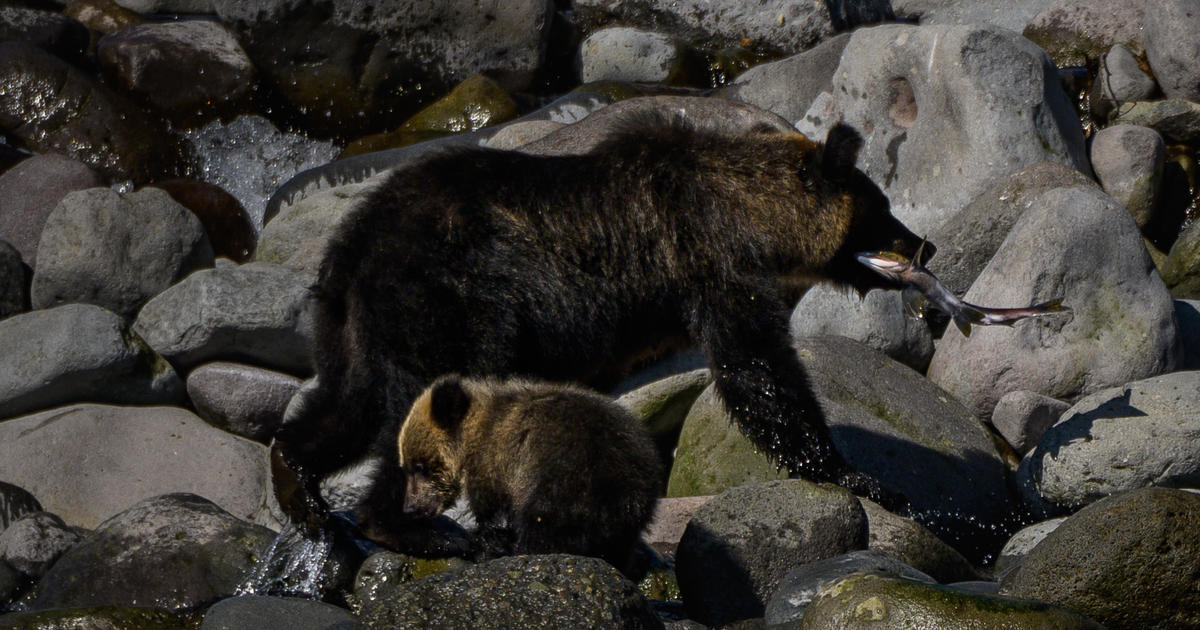Great Barrier Reef undergoing mass coral bleaching event for 5th time in nearly a decade
The Great Barrier Reef – the world's largest reef system that's "one of the richest and most complex natural ecosystems on Earth" – is once again undergoing a mass coral bleaching event. Officials said the event, the fifth occurrence in just under a decade, appears to be the result of heat stress after a record-breaking year for global temperatures.
Officials with the Australian government-run Great Barrier Reef Marine Park Authority said Friday their team conducted aerial surveys over two-thirds of the nearly 133,000-square-mile area. Those surveys "revealed prevalent shallow water coral bleaching on most surveyed reefs," the park said, adding it's "consistent with patterns of heat stress that has built up over summer."
"This unfolding coral bleaching event follows similar reports from reefs around the world during the past 12 months," the authority said in an update on its website. "These Northern Hemisphere reefs have suffered coral bleaching as a result of climate change-driven elevated ocean temperatures, amplified by El Niño conditions in the Pacific Ocean."
Coral bleaching can occur from stress caused by various reasons – temperature, light or nutrients. When the animals are stressed, the algae that live within their tissues as their primary food source, leaves. The algae also provide the coral with their usual vibrant color, which is why the animals turn white, or become bleached, when the algae leave.
While the current event is widespread, its severity and depth vary throughout the surveyed parts of the reef system. The bleaching event's true extent is unknown and will be evaluated through in-water research.
The National Oceanic and Atmospheric Administration's Coral Reef Watch program's bleaching alert system shows that the areas in and around the Great Barrier Reef are at-risk of undergoing bleaching on all levels, ranked from 1 to 5, with 5 being "risk of near complete mortality."
Bleached coral is not dead, but they are significantly more vulnerable.
"If the water temperatures are much higher than normal or continue for several weeks, bleached corals can die from stress or starvation," the authority says. "...Even a severely affected reef can recover over time as surviving corals grow and new coral larvae settle on the reef."
The Great Barrier Reef is a UNESCO World Heritage Site, which the group calls a "globally outstanding and significant entity." The system, which is bigger than the U.K., Switzerland and Holland combined — or roughly half the size of Texas — is "one of the richest and most complex natural ecosystems on Earth."
"There are over 1,500 species of fish, about 400 species of coral, 4,000 species of mollusk, and some 240 species of birds, plus a great diversity of sponges, anemones, marine worms, crustaceans, and other species. No other World Heritage property contains such biodiversity," UNESCO says on its website. "This diversity, especially the endemic species, means the GBR is of enormous scientific and intrinsic importance, and it also contains a significant number of threatened species."
The Great Barrier Reef has been plagued by mass bleaching events several times in the past two decades. According to the Great Barrier Reef Foundation, this marks the eighth event since 1998 and the fifth in just nine years. The most recent mass bleaching happened in 2022 during a La Niña summer, which the foundation said was "particularly concerning" as that weather phenomenon, unlike El Niño, "typically brings cooler, wetter conditions."
Along with limiting fishing to help in the reef's recovery, officials at the authority said the best action people can take is to tackle their role in the underlying issue – climate change. As global temperatures rise, largely from humans emitting planet-warming gases through the burning of fossil fuels, sea surface temperatures also rise.
"It's the combination of local and global actions that will best able the reef to tolerate and recover from events such as these," Park Authority Chief Scientist Roger Beeden said, "and overall we continue our work to make sure we secure the future of the Great Barrier Reef."
In the Great Barrier Reef, the average sea surface temperature has increased by more than 0.8 degrees Celsius since 1880, the authority says, with the warmest years happening in the past two decades. Earlier this week, scientists announced that last month was the hottest February on record, with the oceans also seeing record highs.
"Climate change is the biggest risk, not just to the Great Barrier Reef in Australia, but also to coral reefs around the world," Australian Minister for the Environment and Water Tanya Plibersek said in a video, adding on X, the platform formerly known as Twitter, "We need to protect our special places and the plants and animals that call them home."






